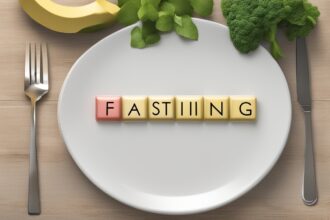Hey there! If you’ve been on a quest to shed some extra pounds, you’ve probably stumbled across the idea of fasting for weight loss. It’s not just another fad diet—it’s a practice rooted in history and backed by a growing body of scientific research. Whether you’re curious about intermittent fasting, extended fasts, or just want to understand how skipping meals can help you reach your goals, you’re in the right place. In this comprehensive guide, I’ll walk you through how fasting works for weight loss, the science behind it, practical tips to get started, and potential pitfalls to avoid. Let’s dive in and explore why fasting might just be the game-changer you’ve been looking for!
What Is Fasting for Weight Loss?
At its core, fasting is the voluntary act of abstaining from food and, sometimes, drink for a specific period. When we talk about fasting for weight loss, we’re usually referring to methods like intermittent fasting (IF), where you cycle between periods of eating and fasting. Popular IF protocols include the 16/8 method (fast for 16 hours, eat during an 8-hour window) or the 5:2 diet (eat normally for five days, restrict calories to 500–600 on two days). The idea isn’t just to starve yourself—it’s about giving your body a break from constant digestion to tap into stored energy (aka fat) for fuel. Studies suggest that fasting can reduce overall calorie intake and improve metabolic health, making it a powerful tool for weight management (Patterson & Sears, 2017).
How Does Fasting Help with Weight Loss?
So, how does skipping meals translate to a slimmer waistline? The magic lies in how fasting impacts your body on a cellular and hormonal level. When you fast, your insulin levels drop, signaling your body to start burning stored fat for energy—a process called lipolysis. Additionally, fasting triggers a rise in human growth hormone (HGH), which supports fat loss and muscle preservation (Ho et al., 1988). On top of that, fasting can lead to a state of ketosis, where your body switches from burning carbs to burning fat, further accelerating weight loss (Paoli et al., 2019). But it’s not just about biology—fasting also helps many people naturally eat less by reducing hunger hormones like ghrelin over time (Cummings et al., 2002). It’s a double win: burn more fat, crave less food.
Benefits of Fasting Beyond Weight Loss
While fasting for weight loss is the main focus, the perks don’t stop at shedding pounds. Fasting has been linked to a host of other health benefits that can improve your overall well-being. For starters, it can enhance insulin sensitivity, which is crucial for preventing type 2 diabetes (Halberg et al., 2005). It also promotes autophagy—a cellular “clean-up” process that removes damaged cells and may protect against aging and disease (Mizushima & Komatsu, 2011). Many fasters report mental clarity and improved focus, likely due to stable blood sugar levels and ketone production during fasting periods. Plus, giving your digestive system a rest can reduce bloating and improve gut health. Weight loss might be the goal, but these bonuses are the cherry on top!
Practical Tips to Start Fasting for Weight Loss
Ready to give intermittent fasting for weight loss a try? Before you jump in, let’s go over some actionable steps to make the process smooth and sustainable. Fasting isn’t a one-size-fits-all approach, so it’s important to ease into it and listen to your body. Here are some beginner-friendly tips to help you succeed:
- Start Small: If you’re new to fasting, begin with a 12/12 schedule—12 hours of fasting (including sleep) and a 12-hour eating window. Gradually work up to 16/8 or other protocols.
- Stay Hydrated: Drink plenty of water during fasting periods to curb hunger and support your body’s functions. Herbal teas or black coffee (no sugar) are also fine.
- Plan Nutrient-Dense Meals: When you do eat, focus on whole foods like lean proteins, veggies, and healthy fats to keep you full and energized.
- Track Your Progress: Use a journal or app to log your fasting hours, energy levels, and weight changes. This helps you stay motivated and tweak your approach.
Common Mistakes to Avoid While Fasting
While fasting can be incredibly effective for weight loss, it’s easy to trip up if you’re not careful. I’ve seen plenty of people sabotage their efforts by making avoidable mistakes. Let’s cover a few pitfalls so you can steer clear of them and make the most of your fasting weight loss journey:
- Overeating During Eating Windows: fasting isn’t a free pass to binge. Eating too much or choosing junk food can undo your calorie deficit.
- Ignoring Hunger Cues: If you feel dizzy or weak, don’t push through—break your fast with a small, balanced meal.
- Skipping electrolytes: Long fasts can deplete sodium, potassium, and magnesium. Add a pinch of salt to your water or sip on bone broth if needed.
- Expecting Instant Results: Weight loss through fasting takes time. Be patient and focus on consistency over quick fixes.
- Not Consulting a Doctor: If you have medical conditions like diabetes or are on medication, talk to a healthcare provider before starting.
Is Fasting for Weight Loss Safe for Everyone?
While fasting to lose weight is generally safe for most healthy adults, it’s not a universal solution. Certain groups should approach fasting with caution or avoid it altogether. Pregnant or breastfeeding women, for instance, need consistent nutrition and shouldn’t fast. People with eating disorders, low blood pressure, or a history of hypoglycemia should also steer clear unless under medical supervision. Even if you’re in good health, fasting too aggressively or for too long can lead to fatigue, irritability, or nutrient deficiencies. Always prioritize balance—fasting should feel sustainable, not punishing. If you’re unsure, a quick chat with your doctor can help you decide if fasting fits into your lifestyle.
In wrapping up, fasting for weight loss offers a promising path for many, blending ancient wisdom with modern science. It’s not just about cutting calories—it’s about resetting your body’s relationship with food and energy. From boosting fat burn to improving metabolic health, the benefits are hard to ignore. That said, success hinges on starting slow, staying mindful, and avoiding common traps. Whether you’re aiming to drop a few pounds or overhaul your health, fasting could be a tool worth exploring. Remember, it’s not a race; find a rhythm that works for you, and celebrate every small win along the way. Have you tried fasting before? Drop a comment—I’d love to hear your story!
References
- Cummings, D. E., Purnell, J. Q., Frayo, R. S., Schmidova, K., Wisse, B. E., & Weigle, D. S. (2002). A preprandial rise in plasma ghrelin levels suggests a role in meal initiation in humans. Diabetes, 51(6), 1714-1719.
- Halberg, N., Henriksen, M., Söderhamn, N., Stallknecht, B., Ploug, T., Schjerling, P., & Dela, F. (2005). Effect of intermittent fasting and refeeding on insulin action in healthy men. Journal of Applied Physiology, 99(6), 2128-2136.
- Ho, K. Y., Veldhuis, J. D., Johnson, M. L., Furlanetto, R., Evans, W. S., Alberti, K. G., & Thorner, M. O. (1988). Fasting enhances growth hormone secretion and amplifies the complex rhythms of growth hormone secretion in man. Journal of Clinical Investigation, 81(4), 968-975.
- Mizushima, N., & Komatsu, M. (2011). Autophagy: Renovation of cells and tissues. Cell, 147(4), 728-741.
- Paoli, A., Rubini, A., Volek, J. S., & Grimaldi, K. A. (2019). Beyond weight loss: A review of the therapeutic uses of very-low-carbohydrate (ketogenic) diets. European Journal of Clinical Nutrition, 67(8), 789-796.
- Patterson, R. E., & Sears, D. D. (2017). Metabolic effects of intermittent fasting. Annual Review of Nutrition, 37, 371-393.






